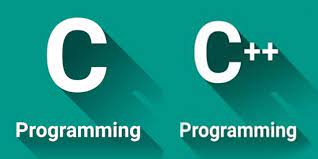1: Introduction to Angular Components
1.1 What is a Component?
1.1.1 Definition and role of components in Angular
1.1.2 Anatomy of an Angular component: template, class, and metadata
1.2 Creating and Configuring Components:
1.2.1 Using Angular CLI to generate components
1.2.2 Understanding component metadata (selector, templateUrl, styleUrls)
1.3 Component Lifecycle:
1.3.1 Lifecycle hooks and their uses (ngOnInit, ngOnChanges, ngOnDestroy, etc.)
2: Component Templates and Data Binding
2.1 Template Syntax:
2.1.1 Understanding Angular’s template syntax
2.1.2 Using structural directives (e.g., *ngIf, *ngFor)
2.2 Data Binding Techniques:
2.2.1 One-way data binding (Interpolation, Property Binding)
2.2.2 Two-way data binding (ngModel)
2.2.3 Event Binding (Handling user interactions)
3: Component Communication
3.1 Parent-Child Component Communication:
3.1.1 Using @Input() to pass data from parent to child
3.1.2 Using @Output() and EventEmitter to send data from child to parent
3.2 Sibling Component Communication:
3.2.1 Using shared services for communication between sibling components
3.2.2 Best practices for component interaction
4: Introduction to Angular Modules
4.1 What is a Module?
4.1.1 Definition and role of modules in Angular (Ref: Angular CLI: Tools and Techniques for Efficient Development)
4.1.2 Understanding NgModule and its purpose
4.2 Creating and Configuring Modules:
4.2.1 Using Angular CLI to generate modules
4.2.2 Configuring NgModules (imports, exports, declarations, providers)
4.3 Root Module vs. Feature Modules:
4.3.1 Differences and best practices for organizing modules
5: Working with Angular Modules
5.1 Core Module and Shared Module:
5.1.1 Purpose of CoreModule and SharedModule
5.1.2 How to structure and use these modules effectively
5.2 Lazy Loading Modules:
5.2.1 What is lazy loading and why use it?
5.2.2 Configuring lazy-loaded routes and modules
5.3 Module Dependencies and Providers:
5.3.1 Managing module dependencies
5.3.2 Providing services at module level vs. component level
6: Advanced Component and Module Concepts
6.1 Dynamic Component Loading:
6.1.1 Techniques for dynamically loading components
6.1.2 Use cases and best practices for dynamic component loading
6.2 Modularizing Your Application:
6.2.1 Best practices for modularizing large Angular applications
6.2.2 How to structure your application for scalability and maintainability
7: Testing Components and Modules
7.1 Introduction to Testing:
7.1.1 Overview of testing tools and frameworks (Jasmine, Karma)
7.1.2 Writing unit tests for components and modules
7.2 Testing Best Practices:
7.2.1 Strategies for effective testing of Angular components and modules
7.2.2 Mocking services and dependencies in tests
8: Debugging and Optimizing Components and Modules
8.1 Debugging Techniques:
8.1.1 Common debugging practices and tools
8.1.2 Using Angular DevTools and browser developer tools
8.2 Performance Optimization:
8.2.1 Techniques for optimizing component and module performance
8.2.2 Best practices for improving Angular application performance
9: Conclusion and Next Steps
9.1 Recap of Key Concepts:
9.1.1 Review of components and modules covered in the training
9.2 Further Learning Resources:
9.2.1 Recommended resources for advanced Angular topics
9.2.2 Next steps for continued learning and development







Reviews
There are no reviews yet.